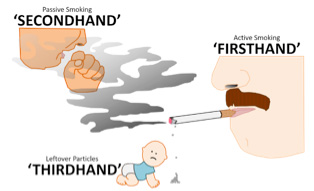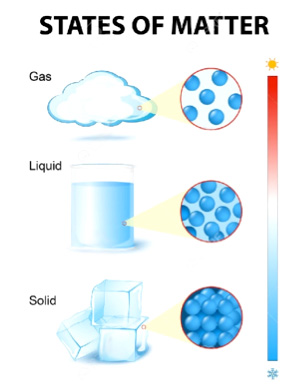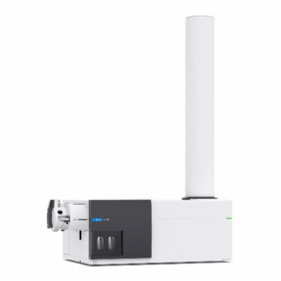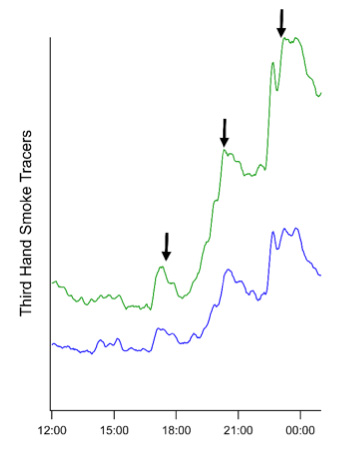| |
Highlights
These researchers quantified thirdhand smoke in a well-ventilated nonsmoking movie theater. Thirdhand smoke refers to residues from cigarette or cigar smoke that are deposited on surfaces and then inhaled at a later time. The researchers calculated that viewers in movie theaters may be exposed to the equivalent of 1 to 10 cigarettes of secondhand smoke over the course of an hour. This means that the levels of thirdhand smoke were about the same as if several cigarettes were smoked inside the theater. This is the first time fresh thirdhand smoke has been quantified. These findings demonstrate the powerful impact of thirdhand smoke transmission into nonsmoking facilities.
By now, you have probably learned in health class that smoking cigarettes is bad for your health, especially for your lungs. You may also be familiar with
secondhand smoke,
which occurs when you inhale cigarette smoke from someone smoking around you, even if you are not smoking yourself.
The damage caused by cigarettes does not stop at secondhand smoke. As new research by Dr. Drew Gentner, Roger Sheu, Jenna Ditto, and collaborators at the Max Planck Institute in Germany led by Dr. Jonathan Williams shows, toxins from cigarettes can still affect you even if you have never been exposed to secondhand smoke. This is due to a phenomenon known as
thirdhand smoke or THS.

Figure 1. First-, second- and third-hand smoke.
[Source: https://thirdhandsmoke.org/faq/]
THS is an umbrella term that refers to residues from cigarette or cigar smoke that get deposited on surfaces and are then inhaled, ingested, or absorbed through the skin at a later time. For example, in a house where smokers regularly smoke inside, the chemicals from the smoke get deposited in the
surfaces
of the house, like the walls, floor, furniture, and ceiling.
Even years after those smokers move out or quit smoking, non-smokers in the house can be exposed to toxins from cigarettes through the accumulated deposits. “We’re expanding the definition of thirdhand smoke to include exposure to fresh smoke carried by the skin and clothing,” explains Roger Sheu. This research provides new insight into the ways that cigarette smoke affects all of us.
Smoke in the Air
In order to better understand this research, let’s first look at how cigarette smoke impacts the air we breathe. According to the American Lung Association, cigarettes are made up of about 600 ingredients that release approximately 7,000 chemicals when burned. These chemicals can be found in different phases in the air: solid, liquid, and gas.
Recall that solid, liquid, and gas are the three
states or phases of matter
commonly found on Earth. These states can be demonstrated by the difference between an ice cube, liquid water, and water vapor, which are all the same combination of
atoms
in different configurations based on temperature and pressure. In a solid ice cube, the atoms are packed so tightly together that the matter retains a certain size and shape. At a certain temperature (32° Fahrenheit), the atoms in the ice cube move away from each other, creating liquid water that takes the form of its surroundings. As the temperature continues to increase (212° Fahrenheit), the water molecules come apart even further into water vapor, which becomes part of the mixture of gases in the air.

Figure 2. States of matter.
[Source: https://previews.123rf.com/images/designua/designua1608/designua160800012/63923636-states-of-matter-phase-or-state-of-matter-and-phase-transition-this-diagram-shows-the-different-phas.jpg]
The phase of any given molecule changes over time. For example, a humidifier works by heating up liquid water into water vapor to add moisture to the air. When that same water vapor hits a colder surface, it becomes liquid water once again, a process known as
condensation.
Before a cigarette is burned, all the chemicals are in the solid phase. As a cigarette burns, the compounds are released into the air in two main states: gases and
aerosols.
Aerosol is the term used to describe liquid and solid particles suspended in air. Some examples of aerosols you may be familiar with include soot, smoke, fog, and sand. Another name for solids suspended in air is
particulate matter.
It is important to note that not all compounds released by cigarette smoke remain in one phase. In particular,
volatile organic compounds
(VOCs) move between phases. VOCs are drawn toward a certain phase by their chemical properties and surrounding conditions (like temperature and relative humidity). For example, smaller and lighter VOCs tend to exist primarily in the gas phase, while larger VOCs containing more oxygen tend to be found in the aerosol (liquid or solid) phase. Compounds of moderate molecular weight and oxygen can be found in both the aerosol and gas phases.
Though some VOCs are emitted from nature (plants), many are emitted by humans during combustion processes (vehicle exhaust, power generation, burning wood or plants) or found in many household products. VOCs are a common source of both indoor and outdoor air pollution. Another source of VOCs is cigarette smoke.

Figure 3. The deposition and release of volatile organic compounds (VOC)
on clothes and bodies in the non-smoking environment.
[Source: Roger Sheu]
Measuring the Air
This project was a collaboration between Yale University and the Max Planck Institute for Chemistry in Germany, and the research took place at a movie theater in Mainz, Germany. This movie theater had been a nonsmoking venue for 15 years, with large viewing theaters and good air ventilation. Each institution used distinct technology to measure compounds released into the air of the movie theater. Together, these different measurements provided a fuller picture of how the theater air changed over time.
The Max Planck Institute researchers installed a machine in the ventilation duct of the movie theater called a proton transfer reaction, time-of-flight
mass spectrometer.
This instrument measures air in real-time (once per second) and identifies any VOCs in the air. The results show the evolving profile of VOCs in the theater air over time.
The researchers also collected samples of the gas and aerosol phases in the air over longer periods of time at the movie theater and shipped the samples back to Yale University for analysis. Roger and Jenna used
gas chromatography – mass spectrometry
to quantify gases in the air over time and
liquid chromatography – time-of-flight mass spectrometry
to quantify the aerosols in the air. These instruments provided more accurate chemical identifications, which supported the real-time measurements.

Figure 4. Liquid chromatography-mass spectrometry machine.
[Source: https://www.agilent.com/en/products/liquid-chromatography-mass-spectrometry-lc-ms/lc-ms-instruments/quadrupole-time-of-flight-lc-ms/6550-ifunnel-q-tof-lc-ms]
Once all the results were in, it was time to analyze the data. “We were going around in circles for months trying to figure out what this data could tell us,” Roger recalls. Eventually, they found a pattern. First, the researchers identified 35 VOCs associated with tobacco smoke, including several that are unique to tobacco smoke such as acetonitrile, 2-methylfuran, 2-dimethylfuran, and
nicotine.
This finding led the researchers to look more closely at THS. Although the entire theater venue was nonsmoking, it was still possible for smokers or those recently exposed to cigarette smoke outside to carry smoke with them into the theater.
A spiking pattern in the cigarette compounds at certain times of day provided further evidence for this THS hypothesis. Over the course of the day, the movie theater showed four or five films. At the time of the study, the theater was screening the family film Wendy during the daytime and the R-rated action films Resident Evil and Irre Helden in the later afternoon and evening. The researchers noticed a spike in VOCs at the start of the R-rated movies but much smaller spikes at the start of the family-friendly movies. Over the duration of the film, the concentration of these compounds continued to drop, spiking again at the start of the next
film.

Figure 5. Concentrations of VOCs over time in the movie theater.
Arrows indicate the starting showtimes of R-rated action movies.
[Source: Roger Sheu]
Using data from previous research into secondhand smoke exposure, the researchers calculated that viewers in movie theaters may be exposed to the equivalent of 1 to 10 cigarettes of secondhand smoke over the course of an hour. In other words, sitting in the movie theater was about the same as if the secondhand smoke from 1-10 cigarettes were released into the theater around you when the movie began.
Together, these findings demonstrate the noticeable impact of thirdhand smoke transmission into nonsmoking facilities. As Roger commented, “this is especially important because this is the first time fresh thirdhand smoke has been quantified.” The researchers hope these findings will motivate further research into the health impacts of thirdhand smoke, increase public awareness of this pathway for exposure, and potentially impact public policy.
In the last several decades, campaigns to reduce tobacco use and limit areas where smoking is allowed in public spaces have reduced the exposure of nonsmokers to cigarette smoke. Nevertheless, these findings show that nonsmokers can still be exposed to toxins emitted through cigarette smoking in more indirect ways, such as via the clothing and belongings of smokers.
There is currently minimal research available into the potential health impacts of exposure to thirdhand smoke in humans. However, research in cells and animal models suggests that THS exposure can be harmful to human health. In one series of experiments, cells exposed to THS and to specific VOCs within THS had more DNA damage compared to control cells. In humans, this suggests that THS exposure could increase the risk of
cancer.
Studies in mice suggest that THS exposure can lead to a variety of complications including cancer,
diabetes,
impaired
immune system,
lung problems, and liver problems.
“It is important to remember that this movie theater was a really well-ventilated area, which reduces the exposure of the occupants to thirdhand smoke” Roger commented. “We also wonder about the impacts of thirdhand smoke in smaller spaces like small restaurants, public transportation, and places that are not well ventilated.”
In future work, Dr. Gentner and his team want to conduct follow-up studies to better understand the processes at work in third-hand smoke exposure. For example, how long does it take for smoke released into the air to deposit on nearby surfaces including clothing? How long does it take for the smoke to come off those surfaces to be inhaled? In addition, Dr. Gentner hopes other researchers will take up the question of the health impacts of thirdhand smoke exposure.
Roger Sheu is a doctoral student in Dr. Drew Gentner’s laboratory at Yale University. His research focuses on better understanding the indoor air environment, especially given that most humans spend an average of 90% of their time indoors. Roger expects to graduate with his Ph.D. this year, and he will continue his research at Johns Hopkins University as a postdoctoral fellow. When not in the laboratory, Roger enjoys playing piano, guitar, and a variety of sports including volleyball, basketball, and running.
Jenna Ditto is a doctoral student in Dr. Drew Gentner’s laboratory at Yale University. Her research focuses on the molecular-level characterization of highly functionalized (i.e. chemically processed) gas- and particle-phase organic compounds, and its applications to a diverse range of ambient outdoor environments. Jenna expects to earn her Ph.D. in the summer of 2020. After graduation, she will be a postdoctoral fellow at the University of Toronto. In her free time, Jenna is an avid runner and enjoys experimenting with new vegetarian recipes.
Drew Gentner is an Associate Professor of Chemical and Environmental Engineering whose work focuses on air pollutant emissions including reactive organic carbon, their subsequent atmospheric chemistry, and novel advancements in analytical chemistry capabilities to measure known, understudied, and emerging pollutants in a variety of environments. The overarching objective and impact of his work is to resolve major knowledge gaps in the chemical and physical processes that drive air pollutant dynamics, to inform air pollution control policy and ultimately improve public health and environmental quality. With a growing interest in indoor air quality and chemistry, Prof. Gentner's work has moved to examine thirdhand smoke as a prominent indoor source of reactive organic pollutants. He went to undergraduate for Chemical and Environmental Engineering at Northwestern University and a Ph.D. in Environmental Engineering. Outside of the laboratory, Prof. Gentner enjoys hiking, skiing, and pretty much anything that gets him outdoors!
For More Information:
- Sheu, R. et al. 2020. “Human transport of thirdhand tobacco smoke: a prominent source of hazardous air pollutants into indoor nonsmoking environments.” Science Advances, 6: eaay4109. https://advances.sciencemag.org/content/6/10/eaay4109
- DeCarlo, PF. et al. 2018. “Thirdhand smoke uptake to aerosol particles in the indoor environment.” Science Advances, 4: eaap8368. https://advances.sciencemag.org/content/4/5/eaap8368
- Jacob, P. et al. 2017. “Thirdhand smoke: new evidence, challenges, and future directions.” Chemical Research in Toxicology, 30: 270-94. https://www.ncbi.nlm.nih.gov/pmc/articles/PMC5501723/
- Sleiman, M. et al. 2014. “Inhalable constituents of thirdhand tobacco smoke: chemical characterization and health impact considerations.” Environmental Science & Technology, 48: 13093-13101. https://www.ncbi.nlm.nih.gov/pubmed/25317906
To Learn More:
- The Gentner Research Group. http://www.gentner.yale.edu/drew-r-gentner/
- Third hand smoke. National Environmental Health Association. https://www.neha.org/eh-topics/air-quality-0/third-hand-smoke
- Thirdhand Smoke Resource Center. https://thirdhandsmoke.org/faq/
- Five Dangers of Thirdhand Smoke. https://health.clevelandclinic.org/5-things-you-should-know-about-the-risks-of-thirdhand-smoke/
- California Thirdhand Smoke Research Consortium. https://tobacco.ucsf.edu/california-thirdhand-smoke-research-consortium
Written by Rebecca Kranz with Andrea Gwosdow, PhD at www.gwosdow.com
HOME | ABOUT | ARCHIVES | TEACHERS | LINKS | CONTACT
All content on this site is © Massachusetts
Society for Medical Research or others. Please read our copyright
statement — it is important. |
|
|

Roger Sheu

Jenna Ditto

Dr. Drew Gentner

Dr. Jonathan Williams

New Look at Thirdhand Smoke
Sign Up for our Monthly Announcement!
...or  subscribe to all of our stories! subscribe to all of our stories!

What A Year! is a project of the Massachusetts
Society for Medical Research.
|
|

